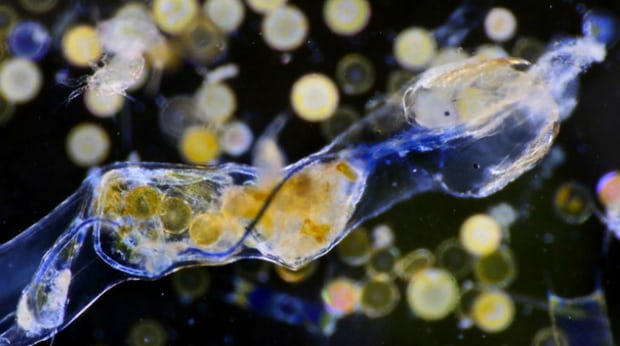
New studies show that the biggest plastic polluter of oceans and waterways is not plastic bags, it's fibres from synthetic clothing, otherwise known as microfibres. Every time these garments are washed, the tiny plastic fibres are released into the environment. With water treatment systems unable to filter them out, they end up in the sea and in the fish we eat. Microfibres have even been found in tap water worldwide, as well as in beer, honey, sugar and sea salt. [via The Guardian]
Clothing designer and textile scientist Emily Cooper, of Silkbody, believes consumers will not be able to make a difference to the insidious issue unless they are able to make the right choices when it comes to purchasing. She says knowledge of fibres and fabrics has been lost by recent generations and, with it, the ability to be discerning when shopping.
Her own silk clothing line is compostable, breaking down after just 6 months. [read Emily's blog]
Plastic fibres have come to dominate the textiles market since they were invented in the 1930s and they now make up two thirds of all world fibre production. [via European Man-Made Fibres Association]
Emily has put together a tool kit to help consumers choose only natural, biodegradable fibres:
Check the label and say NO to:
The finer the fibres, the softer the fabric. Which is why microfibres are favoured for children's toys, fleecey tops and blankets. Products to avoid include:
Instead, say YES to:
The synthetics industry began as a search for a cheaper alternative to silk at the turn of the century. Viscose, a fibre made from regenerated cellulose, was the first man-made fibre to be developed but it still had a natural base. The game-changer was nylon, introduced just prior to World War II and entirely synthesized from petrochemicals. Polyester followed in the 1950s. Synthetic fibres now account for the majority of our clothing and home textiles.
It's time consumers rediscovered the benefits of natural fibres. Silk is as robust as any 'technical' synthetic. It's even used in bullet-proof vests. Silk is as strong as steel, fast-drying, super-soft and odour-resistant as well as warm. Let's return to the original inspiration behind this failed experiment and do the earth and ourselves a favour."
Emily, Silkbody
Aside from choosing clothing made from biodegradable fibres, there are 7 other key ways you can minimise your impact on the environment with your clothing.


1 comment
I’d really like a 3/4 sleeve top in a bright colour, preferably tangerine or red. Are you getting more in?
Leave a comment